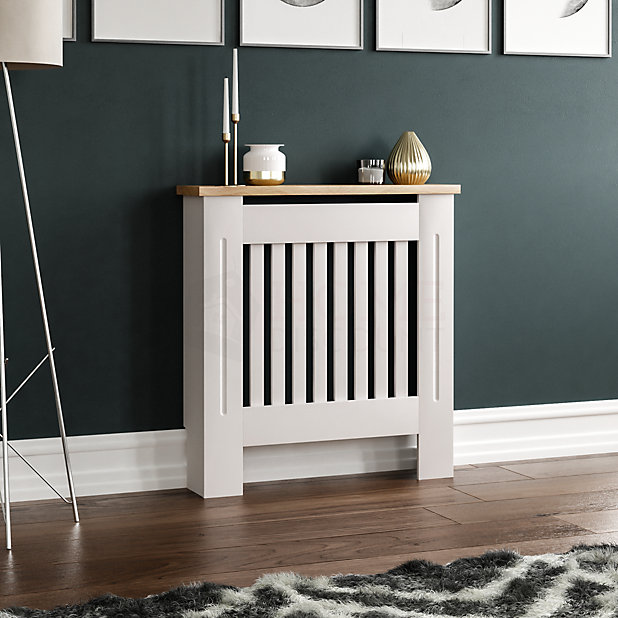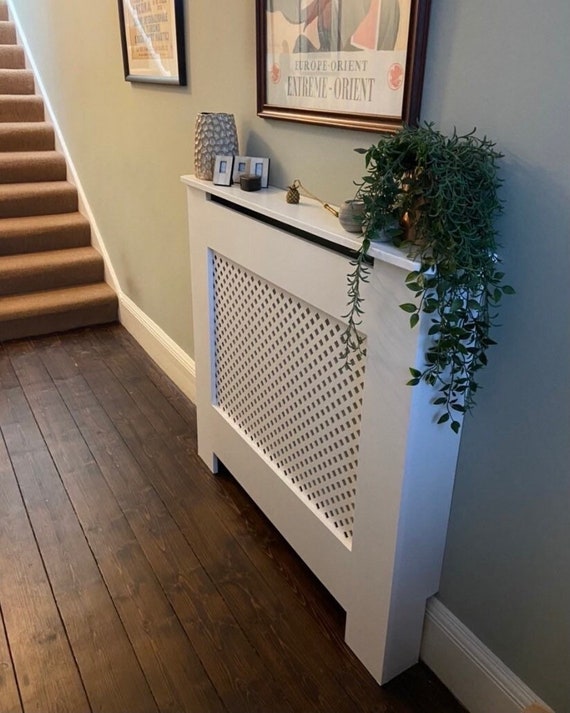Why Every Home Needs a Radiator Cover for Improved Safety and Design
Why Every Home Needs a Radiator Cover for Improved Safety and Design
Blog Article
Radiator Covers: Understanding Materials, Styles, and Benefits
Radiator covers serve both aesthetic and useful objectives within a home, supplying an array of products such as metal, mdf, and hardwood to suit different style preferences. Picking the right radiator cover involves recognizing the subtleties of materials, layouts, and their connected benefits.
Sorts Of Materials


Wood covers, usually crafted from woods such as oak or maple, offer a classic, warm appearance that matches standard interiors. Their sturdiness and ability to be discolored or repainted add to their versatility. Steel covers, typically made from steel or aluminum, are preferred for their robustness and modern-day appearance, typically including smooth lines that improve modern spaces.
MDF, a manufactured timber product, is preferred for its cost-effectiveness and convenience of modification. It can be painted or finished to match existing style while supplying a smooth surface area. Plastic covers, while much less usual, are immune and lightweight to wetness, making them ideal for moist atmospheres.
Ultimately, the selection of product for a radiator cover must straighten with the house owner's style preferences, functional needs, and the particular setting where the cover will be set up. Each product supplies a distinctive character, making sure that there is an option to match every taste and setup.
Popular Design Styles
Emphasizing visual appeal, preferred design styles for radiator covers show a series of tastes and indoor design trends. Standard designs often feature detailed woodwork and elaborate detailing, making them suitable for classic or vintage-inspired interiors. These covers commonly include sculpted components, offering a warm and inviting feel to any type of space.
In contrast, contemporary designs concentrate on minimal aesthetic appeals, identified by tidy lines and underrated elegance. Materials such as steel or smooth wood with a smooth finish are typically utilized, allowing these covers to blend effortlessly into modern-day rooms. Industrial styles, on the other hand, accept resources like revealed steel and concrete, including a vibrant declaration to loft space or urban settings.
For those seeking an unique touch, bespoke styles offer modification options that accommodate specific preferences, making it possible for home owners to choose colors, patterns, and materials that enhance their decoration. Furthermore, farmhouse-style covers incorporate rustic aspects, featuring distressed timber and simple forms that stimulate a comfy, country appeal.
Advantages of Radiator Covers
Radiator covers not just improve the visual appeal of an area but also provide numerous practical benefits that make them a rewarding enhancement to any home. One of the main benefits is safety and security, specifically in homes with pet dogs or youngsters. Covers minimize the risk of burns from warm radiator surface areas, making certain a safer atmosphere.
Additionally, radiator covers can enhance power efficiency. By guiding warmth into the space instead than allowing it to leave, they assist preserve a constant temperature level, minimizing home heating expenses gradually. This try this website is particularly valuable in older homes where radiator systems might be much less reliable.
An additional significant advantage is noise reduction. Radiators can in some cases create unwanted sounds during procedure, and covers can assist stifle these noises, adding to you could try here an extra calm home. Radiator covers can be useful, giving extra storage or display screen area, thus taking full advantage of the utility of often-overlooked areas.
Last but not least, they can shield radiators from dirt and particles, which can prevent performance and boost maintenance demands. With these integrated benefits, radiator covers arise as a useful service for improving both the capability and style of any home atmosphere.
Installment Considerations
Setting up radiator covers needs careful consideration to ensure both performance and safety (Radiator cover). Examine the measurements of your radiator and the surrounding room to make certain an appropriate fit. Exact dimensions are crucial; an ill-fitting cover can obstruct warm flow or produce security dangers
Next, assess the product of the cover. While wood uses visual charm, metal alternatives might offer much get redirected here better durability and warm resistance. Take into consideration the weight of the cover as well; much heavier covers may require added assistance or supports to stay clear of drooping or damages gradually.
Ventilation is one more critical facet. Covers have to feature sufficient airflow to stop overheating and maintain efficient home heating. Seek styles with slats or perforations that enable heat to flow without obstruction.
In addition, ensure that the cover is securely installed to stop accidents, specifically in homes with youngsters or family pets. Radiator cover. It's advisable to adhere to the producer's setup guidelines carefully and, if required, seek advice from an expert for complicated setups
Upkeep and Care Tips
Proper upkeep of radiator covers is crucial for guaranteeing their long life and optimum efficiency. Routine cleaning is vital; dust and debris can accumulate, obstructing air movement and minimizing warmth efficiency. Use a soft, moist fabric or a microfiber duster to carefully wipe the surface area, staying clear of extreme chemicals that may damage the surface. For repainted or timber covers, consider a suitable polish or protective coating to keep their look.
Check the covers regularly for indicators of wear or damages, such as fractures or peeling off paint. Dealing with these concerns promptly can stop more wear and tear. Make certain that the covers are firmly attached and look for any loose screws or fittings, as vibrations from the radiator can loosen them over time.
In colder months, prevent positioning heavy objects or ornamental things in addition to the radiator covers, as this can restrain warmth circulation and trigger unneeded tension to the framework. Consider seasonal maintenance by getting rid of the covers for comprehensive cleaning and inspection throughout warmer months when the heating system is inactive. Embracing these straightforward care suggestions will certainly boost the performance and aesthetic charm of your radiator covers, guaranteeing they offer their objective efficiently for many years ahead.

Conclusion
In recap, radiator covers serve as aesthetic and practical improvements to residential areas. Cautious factor to consider of installation and maintenance further makes certain the long life and performance of radiator covers in any type of home setting.
Radiator covers offer both aesthetic and practical purposes within a home, providing an array of materials such as steel, mdf, and hardwood to match different design preferences. Selecting the best radiator cover includes comprehending the subtleties of products, styles, and their connected benefits.Highlighting visual allure, prominent layout styles for radiator covers show a range of preferences and interior style patterns.Radiator covers not just improve the visual charm of a room but also provide a number of functional benefits that make them a worthwhile enhancement to any kind of home. Think about the weight of the cover as well; heavier covers might call for additional support or supports to avoid drooping or damage over time.
Report this page